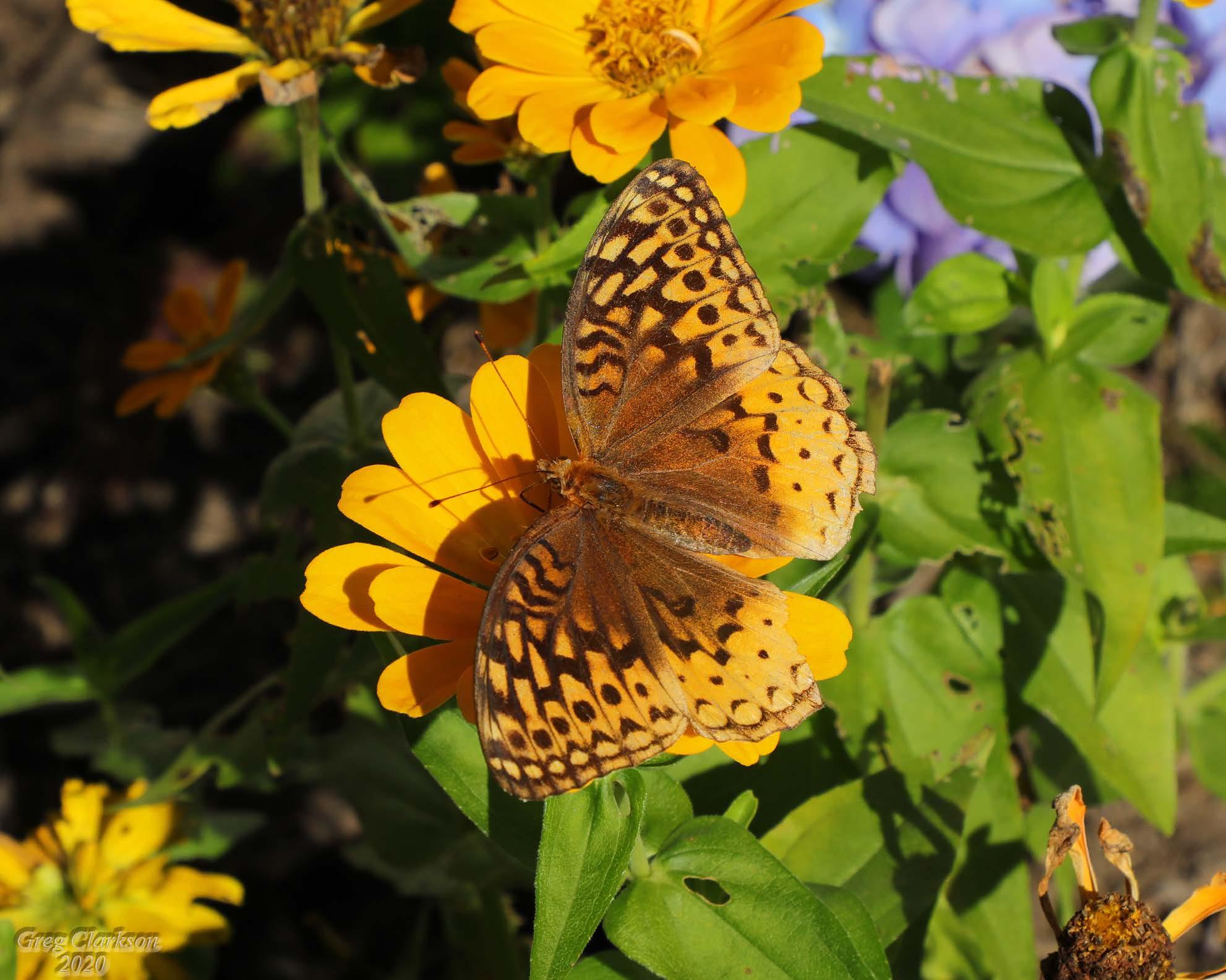




For over 50 years, the Highlands Biological Foundation (HBF) has provided ‘Grants-in-Aid (GIA) of Research’ at the Highlands Biological Station (HBS), bringing graduate students and research scientists to Highlands from all over the country. This year, it was not clear whether the Station would be able welcome their annual cohort of researchers on campus due to COVID-19. Luckily, with the proper safety precautions, several individuals have been able to spend time in residence at HBS - including four recipients of the Foundation's GIA awards. Read about their research below.

MEAGHAN GADE
PH.D. STUDENT THE OHIO STATE UNIVERSITY
The Southern Appalachians are home to the greatest diversity and endemism (restricted to a specific habitat or location) of salamanders in the world. Despite their ubiquity, salamanders are exceptionally vulnerable to the effects of climate change. Many salamanders of the Southern Appalachians are lungless, meaning they must respire through their skin. For such ‘skin-breathing’ to occur, salamanders must stay cool and moist, which restricts them to specific habitats across the landscape. It is important for us to understand how different environmental conditions, such as those across elevations (low elevations are usually warmer than high elevations, as all Highlands residents and visitors are aware!), influence key fitness traits like survival, movement, growth, and stress. For the past four years, HBF GIA’s have supported my efforts to monitor salamanders’ responses to environmental stressors using a longterm mark-recapture study in several plots across elevations. Over four summers, I captured 2,328 salamanders, and recaptured about 25%. In 2020, I collected skin secretions of every adult salamander. The chemical composition of skin secretions is an indicator of stress levels. By analyzing the skin secretions, I am able to compare the relative stress levels of salamanders among the various plot locations. I found that low elevation salamanders had reduced stress compared to those at higher elevations. Using these data, I will be able to directly link stress with survival estimates, improving our understanding of how environmental variation drives population dynamics.
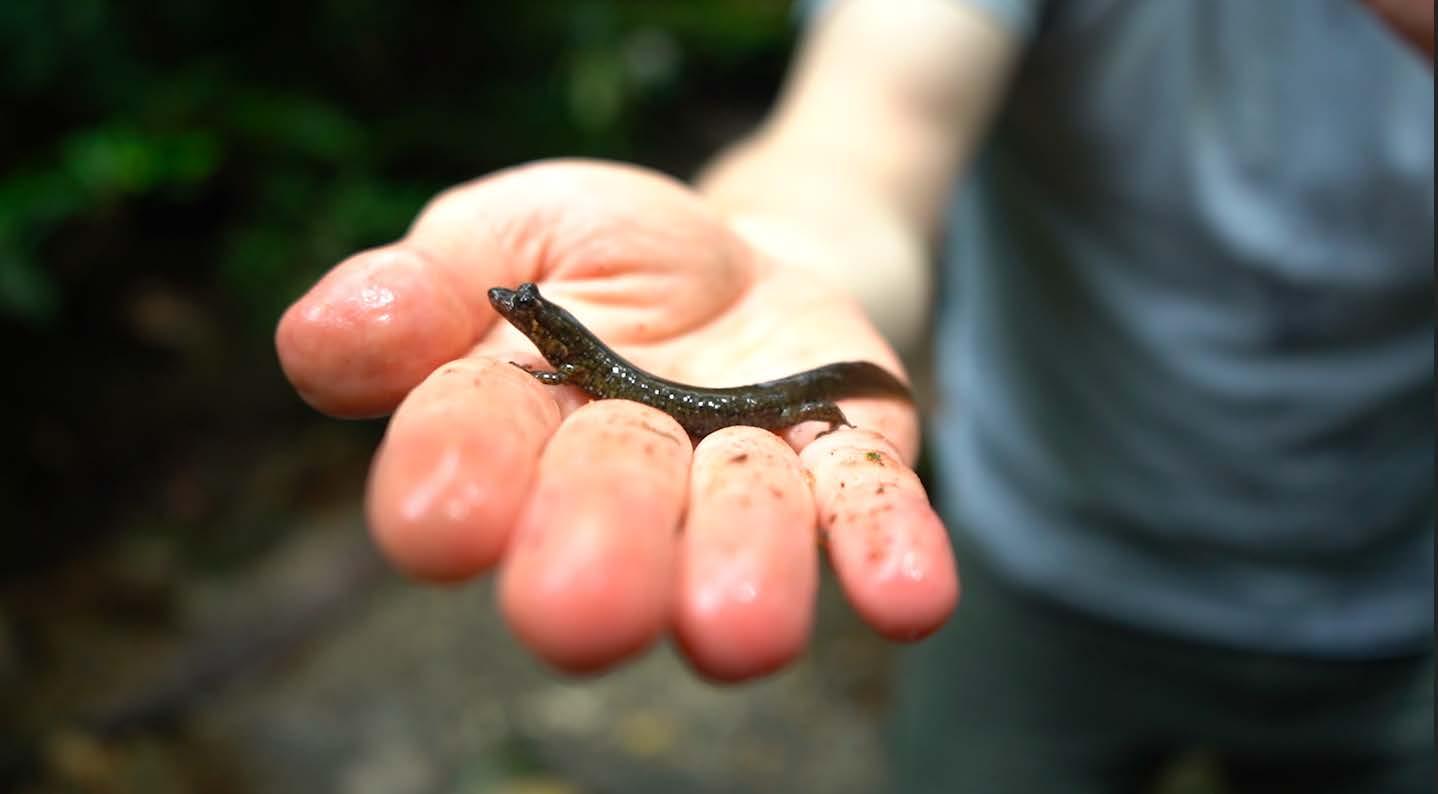
Although 2020 was the final year of data collection for my dissertation, I hope I can return to Highlands either as a visitor or researcher in the future. I must take this opportunity to thank the Foundation and the Staff at Highlands who supported my research and rooted for my success. Thank you.
MONITORING RIPARIAN SALAMANDER RECOVERY FOLLOWING THE CAMP BRANCH FIRE

PHILIP GOULD
PH.D. STUDENT THE OHIO STATE UNIVERSITY
Natural disturbances, including wildfires, are crucial to the overall health and conservation of forest ecosystems. However, in the Southern Appalachians, there is limited understanding of how wildfire impacts wildlife populations in habitats that do not experience frequent fires. Salamanders may be particularly susceptible to the effects of wildfire, as they require cool, moist habitats which are often less common post-fire. Since the 2016 Camp Branch Fire at Wayah Bald, we have conducted annual surveys to investigate the fire's effects on salamander populations.
This summer, we continued this work into its 4th year. We initially saw declines in all focal species, however, after 3 years there is evidence that populations have begun to recover. In forests directly adjacent to streams, we have seen the number of Blue-Ridge two-lined (Eurycea wilderae), Ocoee (Desmognathus ocoee), and red-legged (Plethodon shermani) salamanders stabilize to levels observed in non-burned forests. The ratio of juveniles to adults was higher in burned habitat, suggesting these populations may be expanding. In more intensely burned habitat, we have yet to see recovery of salamander populations and continued monitoring is needed.
In addition to our work studying wildfire, I continued work from 2019 investigating black-bellied salamander (D. quadramaculatus) diet. In the HBS labs, I investigated stomach samples collected from blackbellied salamanders, to assess what portion of their diet consisted of terrestrial prey. While the work is ongoing at OSU, my initial findings suggest over 65% of unique prey were terrestrial. Although flies and ants were the most common prey, I also found beetles, crickets, and snails. I plan to include these data in our study of salamander diet.
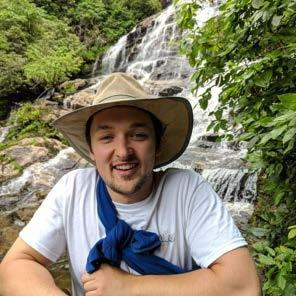 Photos courtesy of Dylan Lytle and Clay Bolt
Photos courtesy of Dylan Lytle and Clay Bolt
 DR. MICHAEL OSBOURN ASSISTANT PROFESSOR LEES-MCRAE COLLEGE
DR. MICHAEL OSBOURN ASSISTANT PROFESSOR LEES-MCRAE COLLEGE
Changes in temperature and rainfall patterns driven by global climate change are associated with increases in the occurrence and intensity of wildfires. In the context of disruptive land-use activities such as timber harvesting, these additional ecological disturbances may affect North American forests in complex ways. Simultaneous disturbances may interact, potentially producing effects that are greater than if the given disturbances occurred in isolation. Here in the Southern Appalachians, salamanders are incredibly abundant and ubiquitous in forests. They have an acute sensitivity to changes in temperature and humidity, making them very useful subjects for studying the effects of environmental disturbance. Although there have been numerous studies examining the short-term impacts of timber harvesting, long-term studies are lacking, and the effects of increased occurrences of droughts and wildfires on salamander populations is not yet understood. In the years following the 2016 wildfires in Western North Carolina, this study has revealed significantly fewer salamanders captured than in prewildfire surveys. This year’s results do suggest that salamander populations in burned and timberharvested plots appear to be beginning to bounce back from the wildfires.
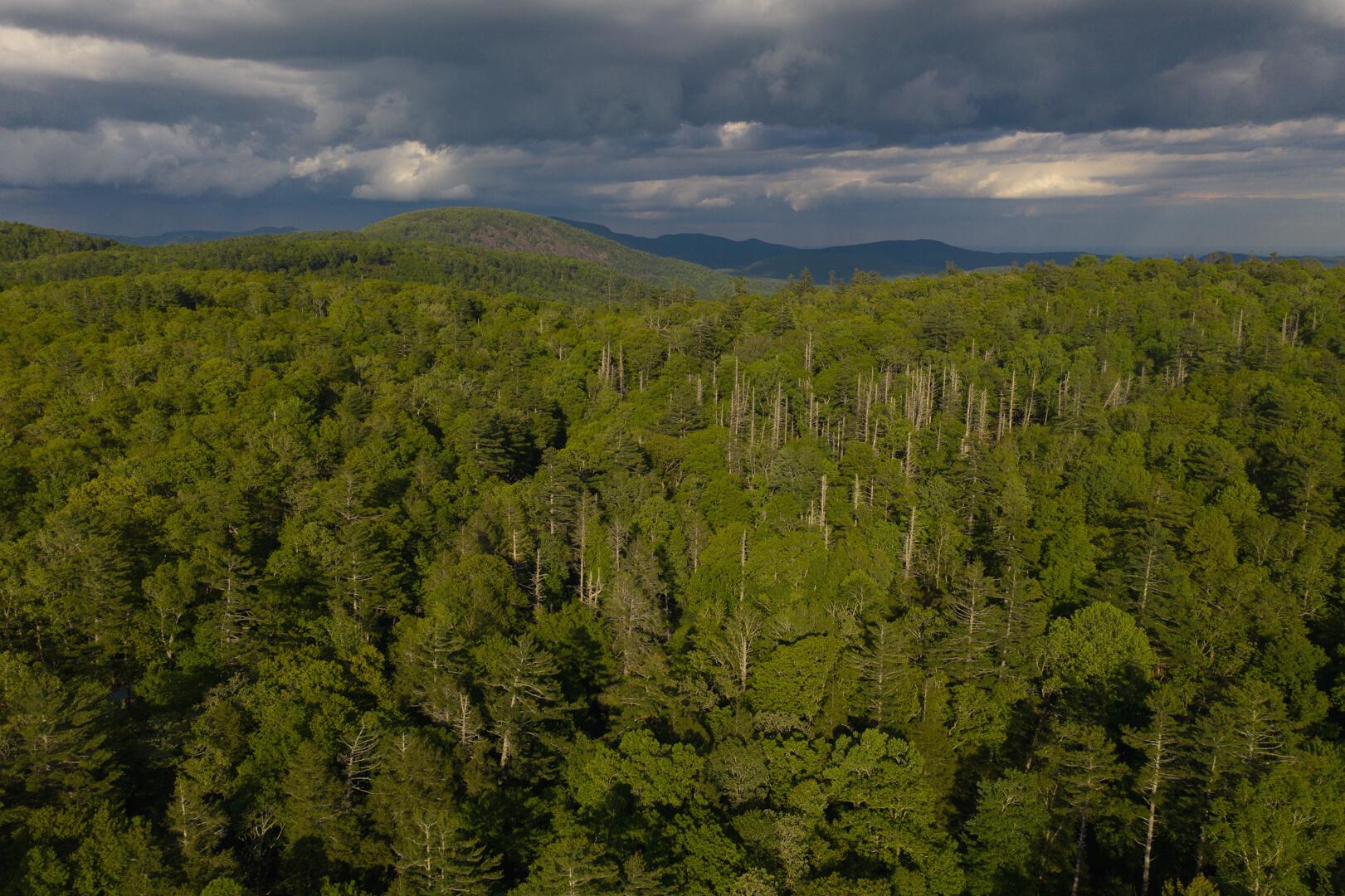
HBF support in 2020 allowed my team to complete 32 surveys, capture more than 1,400 salamanders, and provided an opportunity for my students to gain experience in field ecology while contributing to one of the largest on-going mark-recapture projects of its kind (more than 29,500 capture records over 12 years). Findings from this study should allow us to
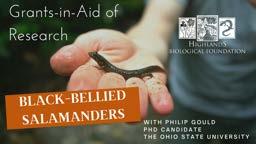
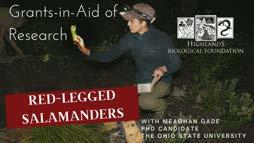
If you'd like a sneak peak into Meaghan's and Phil's 2020 research, you can watch their research videos on our YouTube channel! Just search 'Highlands Biological' and look for these thumbnails:
Are you getting our weekly emails? If you would like to be added to our list, please email info@highlandsbiological.org or go to highlandsbiological.org to subscribe.
You can also follow us on social media:

@highlandsbiologicalstation
Highlands Biological
@highlandsbiostation
@HighlandsBioFdn
highlandsbiological.org
Research has been conducted at the Station for decades! Check out this historic HBS lab photo:

Our 4th GIA recipient, Rachel Jordan, will be conducting her 1st season of field work at HBS this winter. Jordan, a 2nd year PhD Candidate from the University of Wisconsin, will evaluate how native conifers respond to winter warming.
The research funded by the HBF's GIA program contributes to a better understanding of the incredible biodiversity of this region and how global climate change will likely impact it. The researchers and their work also provide conservation planners, as well as forest and stream management, with recommendations for practices that will better protect the unique biodiversity of the Southern Appalachians. Our GIA program has yielded hundreds of graduate theses and thousands of scientific papers.
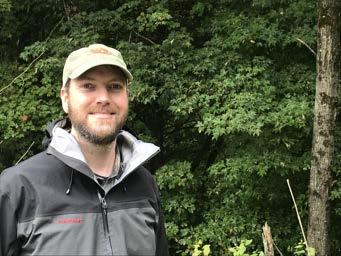 Photo: Dylan Lytle
Photo courtesy of Dylan Lytle
Photo: Dylan Lytle
Photo courtesy of Dylan Lytle

Although it’s been an unconventional summer here in Highlands, the Highlands Biological Foundation continues its dedication to research here on the Highlands Plateau. The Foundation annually supports research at HBS, and over the past 10 years, we have awarded over $300,000 in scholarships and grants to visiting researchers who have come to Highlands to study various aspects of our ecologically significant region. Most recently, the Foundation funded HBS’s newest research endeavor as it became home to a new bird banding station for the Monitoring Avian Productivity and Survivorship (MAPS) program - an initiative that began just over 30 years ago to assess trends in avian demographics in a wide range of habitats in North America.
HBS's bird banding efforts are being led by the non-profit organization Blue Ridge Bird Observatory (BRBO) (formerly known as Southern Appalachian Raptor Research) which has successfully operated several banding stations at other locations in western NC as part of the MAPS program. The bird banding will take place at the Station every 10 days or so between May and August over the next several years. Biological data such as age, sex, feather condition, wing measurements, and any signs of disease or injury will be collected from birds, and each bird will be fitted with a USGS-issued aluminum band featuring a unique ID number used to identify that individual. MAPS banding stations allow researchers to better understand the underlying causes of bird population trends while also serving as an educational opportunity for bird ecology and conservation.
Next summer, if you come for a morning stroll through the Botanical Garden and notice staff working at the bird banding table on campus, please stop by. This is an excellent opportunity to engage in real and relevant science in our community. This project is made possible thanks to the knowledge and experience of BRBO's staff, facilitation by HBS Associate Director Jason Love, and funding provided by the Highlands Biological Foundation. For more information about this research, visit BRBO’s website at www.bigbaldbanding.org and the Institute for Bird Population's website at www.birdpop.org.
Total birds handled: 149
Total species: 21
Resident species: 8
Neotropical migrant species: 13
Warbler species: 8
Thrush species: 3
Sparrow Species: 2
Most abundant banded bird: Slate-colored Junco
If you'd like more details about bird banding, you can watch our virtual Zahner Lecture with BRBO Biologist, Mark Hopey, on our YouTube channel! Just search 'Highlands Biological' and look for this thumbnail:



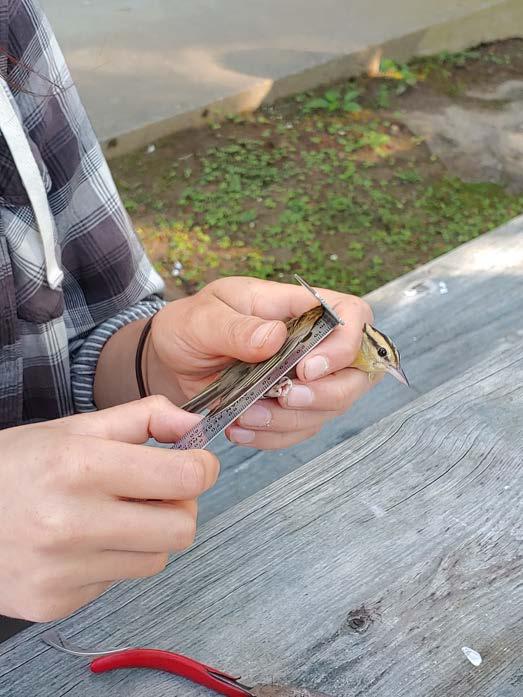
1.BRBOstaffmeasurewingofWormeatingWarbler.
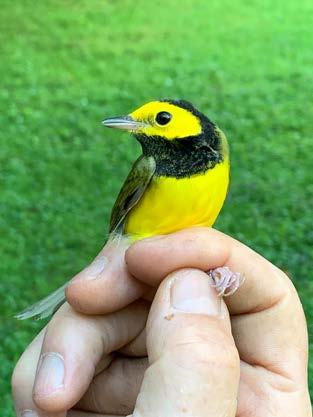
2.StaffcollectdataforanAmericanRobin.
3.Staffanalyzethefeatherconditionofa hatch-yearWoodThrush'swing.
4.GlamourshotofaHoodedWarbler.
5.GlamourshotofanOvenbird.

6.StaffreleaseafemaleRuby-throated Hummingbird.
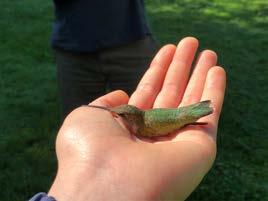
7.StafffinishfittingaBlack-throatedBlue WarblerwithaUSGSaluminumband.
 2020BirdBandingPhotographs:
Photos courtesy of Clay Bolt, Greg Clarkson, Paige Engelbrektsson,and Winter Gary
2020BirdBandingPhotographs:
Photos courtesy of Clay Bolt, Greg Clarkson, Paige Engelbrektsson,and Winter Gary

North Campus is almost complete!
Homeowner Demonstration Garden Installation
Woodland Way Rain Garden Installation
Aquatics Lab Update
ADA Accessible Door and Water Fountain with Bottle Refill Station added to Nature Center
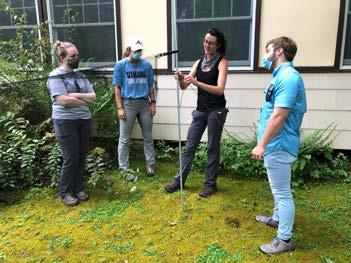

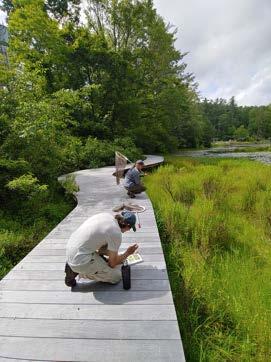
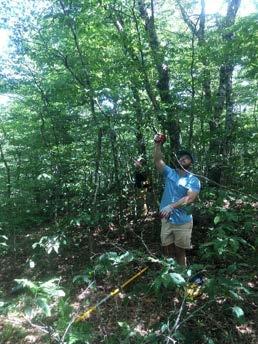
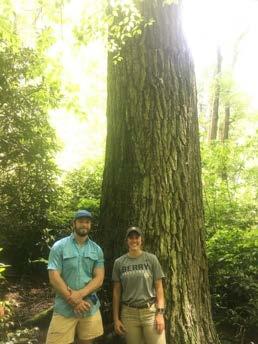 JASON LOVE, ASSOCIATE DIRECTOR, HBS
JASON LOVE, ASSOCIATE DIRECTOR, HBS
For college undergraduates, COVID-19 not only impacted classes and coursework but also internship opportunities. Many summer internship positions were eliminated, leaving students scrambling for other opportunities to learn. Fortunately HBS was able to provide research experiences for several undergraduate research volunteers over the summer.
Cyrena Bedoian, a student at Berry College, volunteered 50 hours to assist with bird banding at HBS. Jordan Mershimer, an undergraduate at Western Carolina University, was the recipient of a Golden LEAF Scholars Leadership award that paid for his internship at HBS. Jordan worked over 240 hours at HBS, helping with bird banding, measuring trees and shrubs in a large permanent vegetation plot established to assess long-term changes in forest vegetation over time, and sorting stream macroinvertebrates samples from nearby Coweeta Hydrologic Laboratory as part of a study to compare current monthly macroinvertebrate richness and abundance from research conducted in the same streams in 1953. Jordan also assisted with PhD student Bernice Hwang’s (Lund University, Sweden) research into the role insect leaf herbivory plays in the nutrient dynamics of old growth forests globally. Part of this research involved using a giant slingshot to hurl a thin, strong rope 80 to 90 feet into the forest canopy and pull down fresh green leaves for nutrient analysis. Jordan, who competes in weightlifting competitions, was particularly invaluable in ensuring the rope reached maximum velocity and height in the tall canopies of old growth at Joyce Kilmer Memorial Forest and remnants of the primeval forest on the Highlands Plateau.

Liam Stiefel, a recent graduate of Davidson College, spent much of his 117 volunteer hours crawling around rhododendron in the permanent plot, measuring diameters of stems and assessing the reproductive status of individual shrubs and trees. Liam also helped sort insects and assisted with leaf collections as part of the leaf herbivory study. Finally, Dustin Bishop, a senior at UNC-Asheville, joined HBS this fall to earn internship hours in order to graduate. In addition to the aforementioned activities, Dustin will also help with the installation of a new weather station at HBS.
HBS appreciates the efforts of these volunteers and hopes that we can continue these research opportunities for undergraduates and recent graduates in the future.
As we head into the fall, a time of reflection and gratitude, I have to look back on a summer no one could have expected. Like other museums across the country, the Highlands Nature Center remained dark and silent at a time when hundreds of visitors should have been passing through our front door. There were no nocturnal Salamander Meanders, no Creature Feature programs, no rambunctious campers, or studious Zahner lecture attendees. Still, I find that I am grateful. This field is one at risk across the country. When surveyed by the Lawrence Hall of Science at the University of California, Berkley, many environmental education organizations reported uncertain futures. Furloughed staff, lost revenue, and students missing vital education opportunities - particularly from marginalized communitieswere common themes across the responses. Perhaps the most terrifying part was that 30% of respondents said they would be unlikely or unable to reopen if social distancing remained in place through the end of the year.

In contrast, HBF's ability to continue offering environmental education through the Nature Center has never been in doubt. This is thanks to you, our incredible donors and members. You have answered the report's call for "urgent support to preserve the rich, irreplaceable learning experiences," creating opportunities for Virtual Zahner lectures and livestreamed tours of the Botanical Garden. This fall, we will hold Nature 101 premieres, continue hosting our first book club, and provide place-based programs for local afterschool groups. Even when we can't be together in person, HBF is continuing its mission of supporting education about the Southern Appalachians with your help.
I am grateful for each of you who generously supports our mission. I hope that come spring, the Nature Center is once more open to our community. I look forward to seeing visitors use our new handicap-accessible front door, hikers fill their water bottles, and children explore our expanded kid's discovery zone. Most of all, I can't wait to see you all again!
The Highlands Nature Center (NC) has been welcoming visitors since 1927! Here are some snapshots from years past.
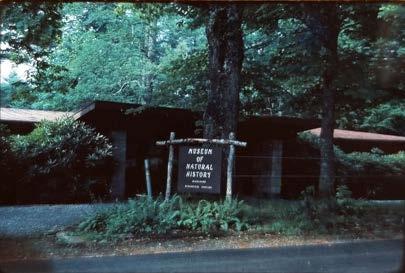
1. Laura Mansberg Cotterman holds a corn snake during her time as NC Curator in 1976-77.

2. The Patterson siblings in the back room of the NC in 1966. Two of the Patterson sisters are currently HBF Trustees!

3. A family admires the Eastern Hemlock tree cookie in the NC many years ago - this exhibit is still in the NC today!

4. The front of the NC during the summer of 1977.
5. The Biggin family sits outside the NC in 2019.
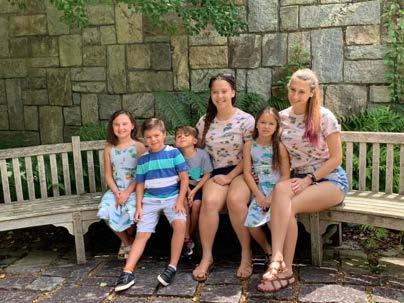
This year, HBF had to forgo our annual fundraisers and move many of our educational programs online to engage our members while COVID-19 restricted our inperson programs and the Highlands Nature Center remained closed. Here are some of our offerings since March:
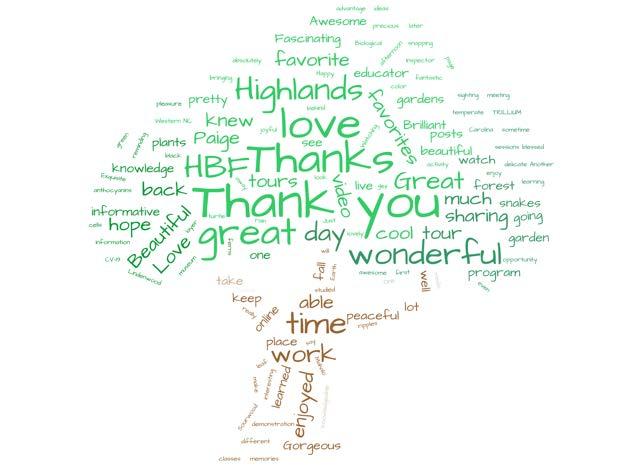
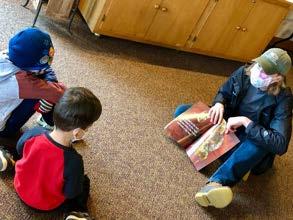

Virtual 'Yoga in the Garden'
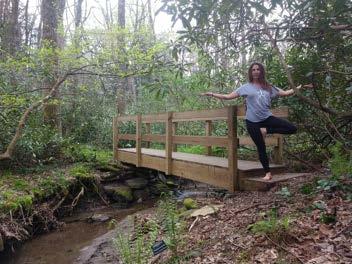
with Rachel Kinback of Yoga Highlands

Nearby Nature Activities

Spring & Summer Sightings


in the Botanical Garden
Weekend Wanders
Virtual Zahner Lectures
Ghostly Garden Walks
Drawdown Book Club
Knee High Naturalists
Virtual Nature 101s
Many of these offerings are available to you anytime on our Virtual Learning Center page found at highlandsbiological.org, on the HBF YouTube Channel, and on the HBS Facebook page.

VIRTUAL ZAHNER LECTURES
FT MARK HOPEY, JASON LOVE, AND SUSAN CERULEAN
This tree is a word collage we created using your comments on our social media pages! Thank you for your support, feedback, and questions.
RELATED TO OCTOBER'S NATURE 101:
The leaf litter sprinkled throughout our forests and lawns serves as a winter refuge for many species of arthropods and vertebrates including millipedes, ground beetles, salamanders and shrews. The leaves trap the relative heat of the earth and keep these animals from freezing. This insulating effect helps queen bumble bees tucked underground in their burrows as well as Mourning Cloak, Eastern Comma, and Question Mark butterflies which overwinter in leaf litter as adults. For these reasons, consider leaving parts of your yard “rake and blower-free" this fall – the butterflies, bees, and salamanders will thank you!
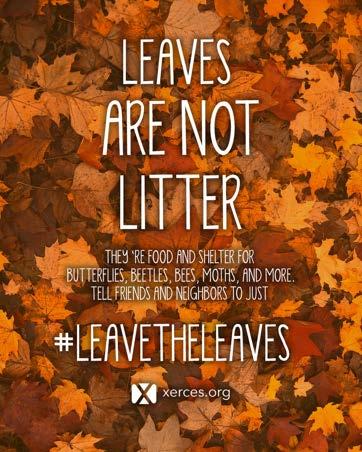
Stimulating, promoting, and funding biological research and education in the Southern Appalachians.

Nature Center programming and summer camps

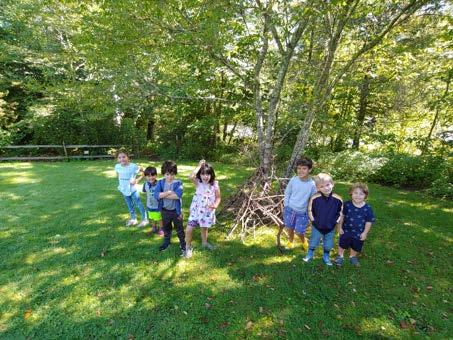
Research in the Southern Appalachians
Leave
Community outreach and education

The Highlands Botanical Garden

that will inspire present and future generations to preserve and protect the unique environment of the Highlands Plateau. Please remember the Highlands Biological Foundation in your will. Contact Charlotte at (828) 526-2221 for more info.

This year has flown by, and our Board of Trustees, staff, and members have worked harder than ever to promote our mission to the community and beyond through new, creative, digital offerings. We cannot thank you enough for supporting the valuable research and education we have been able to offer during this unprecedented year. Thank you for investing in the Highlands Biological Foundation. Thank you for making a difference.